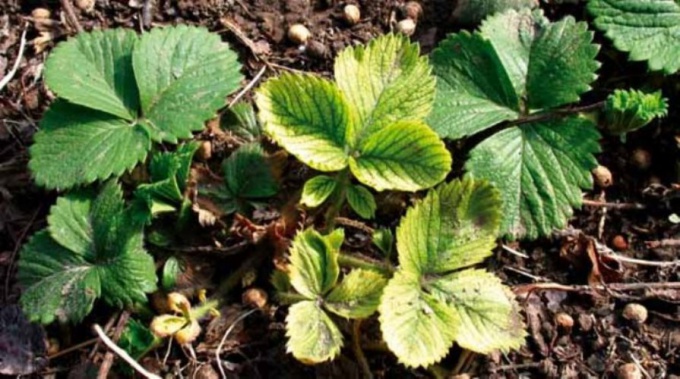Sockets derived from such berry bushes, for planting is not suitable. Blame the fungus in the soil (it may remain there until the age of 13), which, filling the vessels of the roots clog them, and they don't spend already no water, no nutrients.
Verticillate early signs of decay can be recognized in late may - June. A secondary outbreak of disease occurs at the end of August - September. More likely they marvel at the varieties "festival", "dawn", "the Beauty of Zagorje", "Komsomolskaya Pravda" and smaller - "Zenga - zengana" "the Talisman", "Purple". Sometimes on strawberries and is found fitoftoroza decay. Signs the following: the appearance at the base of petioles banding of brown spots, sloughing and death of leaves, stems with budding green berries, Browning and then blackening of the pith of the rhizomes, fibrous roots dieback, plant death after 1-2 years.
When you notice plants are affected verticillatum or fitoftoroza wilt, immediately remove them sconosciute or burn.A hole disinfect with chloride of lime (100 g per Bush). New strawberry plants in this place can not be planted from 6 to 13 years. Remember that it is risky to lay the strawberry on the site where it grew potatoes, tomatoes, cucumbers, eggplant, zucchini, pumpkin - after they can be foci of infection. It is best to plant seedlings on a clean pair after or carrots, fennel, and legumes.
Good and other predecessors - calendula, marigolds, onions, garlic. Some gardeners using phytoncide of integrated performances of these plants, grow them along with the strawberries. Seeing that on your site any plants suffer from wilting, before putting the strawberry in the fall (for spring planting) or in spring (for autumn planting), make the soil 85% powder tizona (10-15 kg per sq. m.), and when boarding or 5-7 days after it pour the 0.2 - percent solution benlate (150-200 g for each plant).
